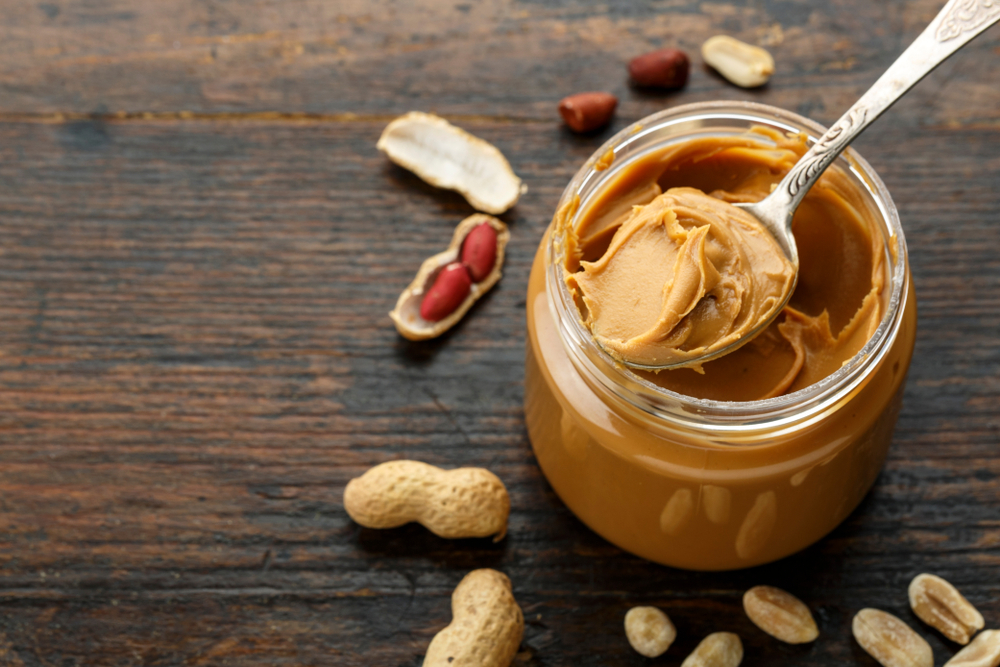A beloved and versatile food enjoyed by individuals of all ages, peanut butter is not only delicious but also nutritious. Whether paired with apples, celery sticks for a balanced snack, or spread between slices of bread for a classic PB&J sandwich, it serves a variety of purposes. Peanut butter even finds its way into baking, such as our straightforward three-ingredient peanut butter cookies recipe. Given its reputation as a shelf-stable spread, many consider peanut butter a pantry or fridge staple. However, like all things, even highly shelf-stable items have a limited lifespan. So, does peanut butter go bad?
To answer this question about the potential perishability of peanut butter, we consulted experts in the field: Dr. Bryan Quoc Le, Ph.D., a food scientist and the author of “150 Food Science Questions Answered”; Melissa Wasserman Baker, RDN, the founder of FoodQueries; and Mary Wirtz, MS, RDN, a registered dietitian and consultant for MomLovesBest. Continue reading to uncover the mystery surrounding the perishability of peanut butter, and to gain a deeper understanding of how this ground legume can impact your health. For more insights, don’t miss “Is Peanut Butter Good For You? 20 Effects of Eating It.”
Can Peanut Butter Spoil?
In short, yes, peanut butter can indeed go bad, although the timeframe for spoilage is relatively lengthy. According to Wirtz, this prolonged shelf life can be attributed to its low moisture content and high oil content. She explains, “The primary cause of spoilage is oxidation. When the oils in peanut butter are exposed to oxygen, they can become rancid, resulting in off-putting flavors and odors. Furthermore, the potential for mold growth exists if water or other contaminants make their way into the jar, although this is less common due to peanut butter’s high oil content and low water content.”
The specific shelf life of your jar of peanut butter may vary depending on the type of peanuts used and the processing method employed. As Dr. Quoc Le explains, “The variety of peanuts used in the peanut butter can impact its shelf life. Peanuts with higher oil content or a greater concentration of unsaturated oils are more susceptible to oxidation. Additionally, certain amino acids in the proteins of peanut butter can influence the taste, flavor, and texture of the peanuts during the roasting process, resulting in distinct flavor profiles for different peanut butter types through a chemical process known as the Maillard reaction. These flavors can change over time in storage, with some being more prone to developing off-flavors and becoming rancid in the presence of air and moisture compared to others.”
Strategies for Prolonging the Freshness of Your Peanut Butter Jar
Despite its reputation as a shelf-stable item, peanut butter is, in fact, a perishable food product. Therefore, it will eventually go bad over time, especially if it is not stored properly. The shelf life of peanut butter can be influenced by various factors, including storage conditions and the date of roasting.
According to information provided by the National Peanut Board:
An unopened jar of peanut butter can remain viable for 6-9 months when stored in your pantry, and it does not require refrigeration.
An open jar of peanut butter, if kept in the pantry, typically remains good for about 2-3 months.
An open jar of peanut butter, when stored in the refrigerator, can last 6-9 months.
Baker adds her advice on storage temperatures, stating, “The optimal temperature for storing peanut butter is in a cool, dry location, usually around room temperature (68-72°F or 20-22°C). However, after opening, placing it in the refrigerator (at around 34-38°F or 1-3°C) can help extend its shelf life.”
Ways to Extend the Freshness of Your Peanut Butter Jar
Baker offers three simple tips to help preserve the freshness of your peanut butter for as long as possible:
Store your peanut butter in the refrigerator: While it’s not necessary for unopened jars, once you’ve opened it, keeping peanut butter in the fridge can extend its shelf life and slow down the oxidation process.
Ensure the jar is tightly sealed: When not in use, make sure the lid is securely closed to minimize exposure to oxygen.
Prevent contamination by using clean utensils: Always use a clean knife or spoon when scooping peanut butter to avoid introducing any contaminants.
For those who consume peanut butter occasionally and are uncertain about their consumption rate, Wirtz suggests opting for powdered peanut butter, which has a shelf life of about a year.
Indicators of Spoiled Peanut Butter
There are several unmistakable signs that indicate when a jar of peanut butter has gone bad. Fortunately, most of these signs can be detected using your five senses.
Dr. Quoc Le explains, “Oxygen from the air can react with the fats in peanut butter to form aldehydes, which give off metallic off-flavors and off-odors. Moisture, whether from the air, the peanut butter itself, or from transferring other spreads like jam into the peanut butter, can accelerate the hydrolysis of fats, resulting in the generation of fatty acids.
These compounds also contribute to undesirable flavors and mouthfeel.”
In summary, if you notice unusual off-flavors, off-odors, or a change in texture, it’s a clear indication that your peanut butter may have deteriorated.

